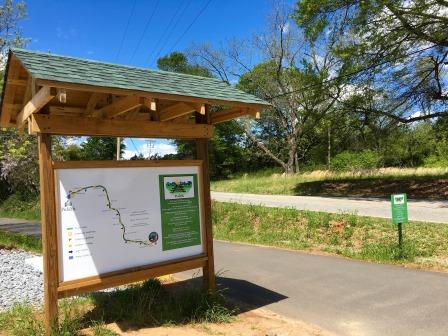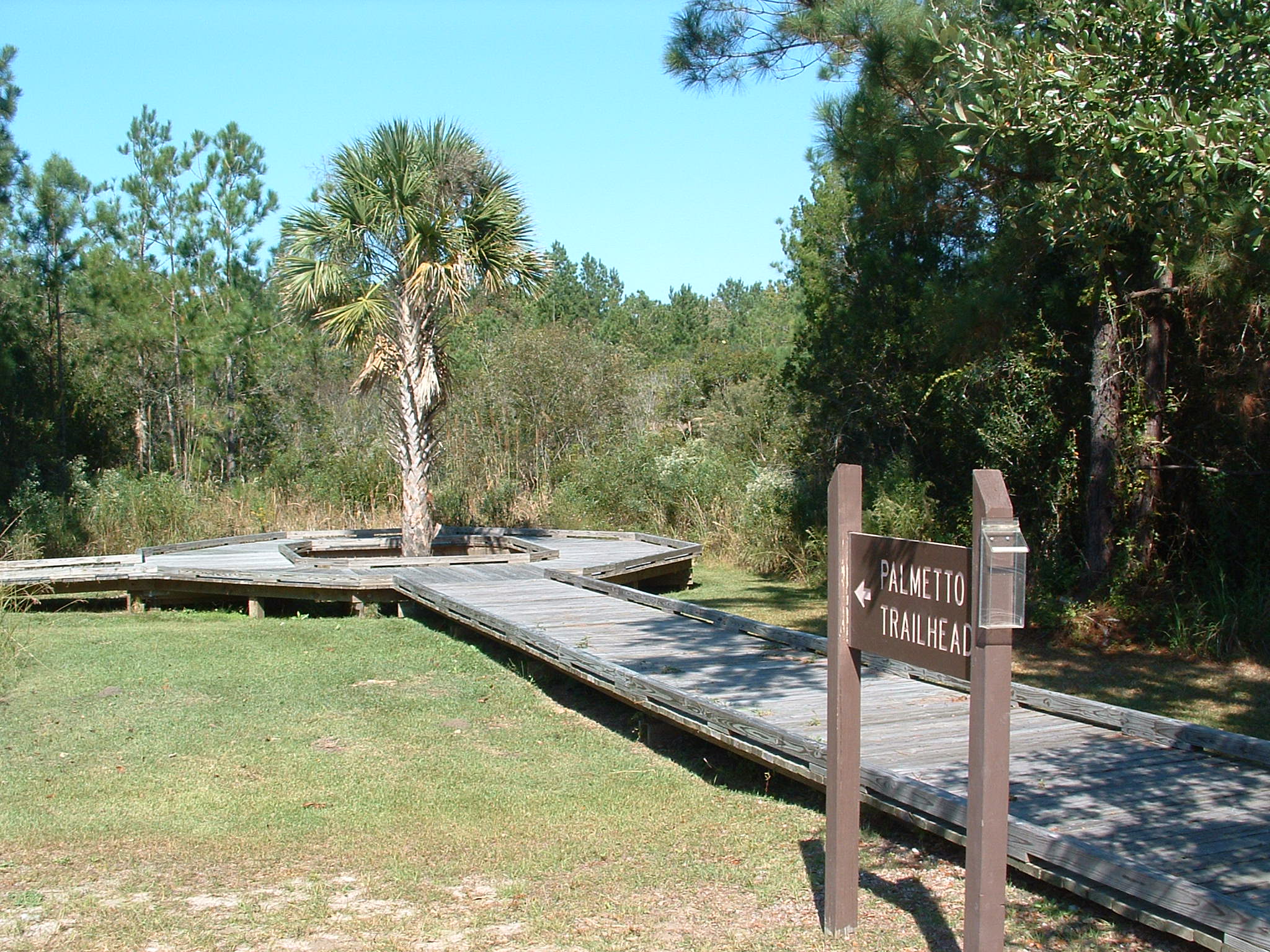Hiking and biking trails do more than promote healthy lifestyles, improve quality of life and share the beauty and history of South Carolina’s cities. They make good business sense, too.
Trails run through many of the state’s cities and towns, often transforming the paths of abandoned railroad lines into opportunities to offer residents and visitors a chance to exercise, enjoy the outdoors and help the local economy.
"Cities and communities that embrace trails are considered places with a high quality of life," said Natalie Cappuccio Britt, executive director of the Palmetto Conservation Foundation. "Well-designed trail systems attract tourists and new businesses and revitalize small towns."
A good example is the Doodle Trail that runs between Pickens and Easley in Upstate South Carolina. It follows the route of the Pickens Railroad, nicknamed the Doodle Line because it ran back and forth between the two towns during the height of the area’s industrial period, similar to the movement of a doodle bug. Now, it’s a multipurpose trail, uniting the two cities by foot or bicycle.

The 7.5 mile Doodle Trail, connecting Easley and Pickens, gives new
life to the former Doodle Railroad Line. (Photo/Lindsay Cunningham)
The cities of Easley and Pickens, along with the Rails to Trails program, worked together to create the trail. "In our plan for the city, we are looking for the highest quality of life possible," explained Lindsay Cunningham, public information officer and marketing coordinator with the City of Easley. "We have a strong recreation program, but we wanted something all ages could use and that was accessible. It’s been everything we hoped it would be."
Community development, more than money-making, was the overarching plan for the Doodle Trail, Cunningham said. But along with being an example of a strong partnership between the two cities and a source of civic pride for residents, the trail has brought some new commercial ventures. Two stores catering to walkers and bicyclists opened on each end of the trail in Easley and Pickens. In addition, the trail transformed some rundown areas, raising property values and spurring development, she said.
That’s not unusual. Britt said multiple studies indicate that property values for homes and businesses near trails are greater—with increases ranging from 4 percent to 20 percent when compared to properties not along trails.
"That is not surprising given the results of a recent survey by the National Association of Realtors that cited walking and biking trails as the top amenity desired by homebuyers," she said.
Cunningham said Easley looked to the Swamp Rabbit Trail in Greenville County to learn best practices for organizing and regulating trails. The Swamp Rabbit, a 13.5-mile walking and bike trail that stretches from Travelers Rest to Greenville, has become one of the region’s most popular attractions. It’s also been credited with fostering economic development along its path, including a bike-friendly inn in Greenville and new restaurants and shops catering to cyclists and walkers in Travelers Rest.
In fact, a Furman University study of the economic impact of the Swamp Rabbit Trail showcased one business in Travelers Rest that reported 75 percent of its Saturday business is directly related to the trail, Britt said.
The largest trail in South Carolina, the Palmetto Trail, extends from the coast near Charleston to the mountains in the Upstate. When completed, it will cover more than 500 miles for hikers and bicyclists. Last summer, the City of Walhalla celebrated a new partnership with the Palmetto Conservation Foundation to extend the trail into its downtown.

Starting at the Intracoastal Waterway, the Awendaw Passage of the Palmetto Trail meanders westward through maritime forest and offers sweeping vistas of Lowcountry salt marsh.
Mayor Danny Edwards believes the addition of the Palmetto Trail will offer an economic boost to Walhalla. He said downtown businesses, including a group of investors planning a new boutique hotel in Walhalla, are very supportive of the trail coming to the city.
"It will bring a new group to our city that normally goes to northeast Georgia, western North Carolina or other biking and hiking communities in the Southeast," Edwards said.
"We know the Swamp Rabbit Trail has brought over a half million riders to Travelers Rest in the last couple of years. We may never have those numbers, but what if we did?
Our restaurants and other businesses would be overflowing with customers."
He said the partnership with the Foundation started with a casual conversation between Foundation board members and the president of Walhalla Partners for Progress. The city, the Walhalla Chamber of Commerce and other leaders supported the idea from the beginning.
"We just can’t wait to get started with the trail. You go to places like Bryson City, Brevard and now Travelers Rest and see what’s happening, and think, ‘Wow, we can do this.’ Everyone is very excited about our future."
The Palmetto Trail also runs through the historic city of Eutawville in Orangeburg County, passing through areas that hold much history from the Revolutionary War, including the Battle of Eutaw Springs and downtown Eutawville.
Eutawville Councilman Brandon Weatherford said plans now being discussed to beautify the trail’s path through Eutawville will offer a strong opportunity for the town to show off its history and boost tourism. "When the trail receives this much needed face-lift, people will want to visit our village and see the history. This will help our businesses in town," Weatherford said
The North Augusta Greeneway (spelled that way as a nod to former Mayor Thomas Greene, who is credited with helping develop the city’s trail) is a more than seven-mile paved recreational trail that also follows the route of an abandoned railroad right-of-way the city purchased in 1988. The trail has grown over the years and now meanders through the city and many of its neighborhoods, with public access available at three locations.
"We have counters out there that show numbers as high as 60,000 people use the Greeneway each month," City Administrator Todd Glover said. "People are coming to our city from all over. And when they leave the Greeneway they stop at restaurants and eat, they fill up with gas, they go to the grocery store."
Right now, no businesses are located adjacent to the Greeneway, but that may be changing. Glover said the city is working on a Greeneway connector, an urban spur that will turn the existing alleyway system downtown into an extension of the Greeneway walking trail. The portion will connect churches, schools and business in the downtown district.
North Augusta has applied for grant funding to get the first three phases of the spur started. Because the alleyways are already set up for pedestrian traffic, Glover anticipates an easy conversion to the trail.
He explained that potential new businesses looking to move to downtown always ask about traffic counts. "If I can tell them there will be 60,000 people a month on foot? That will get their attention."
